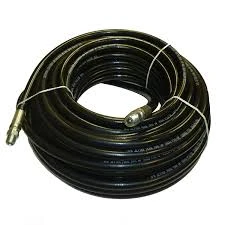Understanding the Benefits of Flexible Hose Connectors in Plumbing Applications
Understanding Flexible Hose Connectors An In-Depth Look
In modern plumbing and piping systems, flexibility and adaptability are paramount. One of the most versatile components used to achieve this is the flexible hose connector. These connectors serve as vital links in various systems, offering numerous benefits that enhance fluid transfer, ease of installation, and overall system reliability. This article delves into the significance of flexible hose connectors, their types, applications, and best practices for usage.
What is a Flexible Hose Connector?
A flexible hose connector is a flexible tube used to connect segments of piping and to facilitate the flow of fluids while accommodating movements and vibrations. Made from materials like rubber, PVC, or metal, these connectors can stretch, bend, and twist, making them ideal for applications where rigid piping may be impractical. Unlike traditional hard pipe fittings, flexible hose connectors can absorb shocks, mitigating risks of damage due to stress and pressure fluctuations.
Types of Flexible Hose Connectors
1. Rubber Hose Connectors Commonly used in both residential and commercial plumbing settings, rubber hoses are durable, resistant to various chemicals, and can handle high levels of pressure. They are typically reinforced with fabric or wire to improve their strength and flexibility.
2. Stainless Steel Hose Connectors Known for their corrosion resistance and durability, stainless steel connectors are ideal for industrial applications. They can handle extreme temperatures and pressures, making them suitable for carrying fluids and gases in harsh environments.
3. PVC Hose Connectors Lightweight and cost-effective, PVC connectors are often used in irrigation and drainage systems. They provide good chemical resistance but may not tolerate high temperatures as effectively as rubber or metal options.
4. Braided Hose Connectors These connectors combine layers of material to provide greater strength and flexibility. Commonly used in applications where high pressure and flexibility are required, braided hoses are often made from rubber with a braided stainless steel exterior for added protection.
Applications of Flexible Hose Connectors
Flexible hose connectors are invaluable in various industries due to their adaptability. Some key applications include
- Plumbing Systems In residential plumbing, these connectors are used to connect appliances like washing machines and refrigerators to water supply lines. Their flexibility allows for easy installation and movement, even in cramped spaces.
- Industrial Applications In manufacturing and oil and gas industries, flexible hoses are crucial for transferring liquids and gases between tanks, machinery, and processing systems. They help in managing the dynamic movements and vibrations present in these environments.
- Automotive Industry Flexible hoses are used in vehicles for coolant and fuel systems. Their ability to bend and flex helps accommodate the engine's movements while ensuring efficient fluid transfer.
flexible hose connector

- Marine Applications In boating and maritime settings, flexible hose connectors are essential for fuel lines and water supply systems, as they can endure the challenging conditions of saltwater and constant vibrations
.Benefits of Using Flexible Hose Connectors
1. Ease of Installation The flexibility of these connectors simplifies the installation process, allowing for quick connections and easy adjustments, which is especially beneficial in complex plumbing layouts.
2. Vibration Dampening Flexible hose connectors can absorb vibrations from pumps and machinery, reducing stress on adjoining pipes and preventing potential leaks or ruptures.
3. Space Efficiency In crowded spaces, the ability to bend and route connections easily can save considerable room, allowing for more efficient use of available space.
4. Reduction of Noise By dampening vibrations and movement, flexible hoses can also help reduce noise levels in piping systems, contributing to a quieter environment.
Best Practices for Usage
When utilizing flexible hose connectors, it is essential to follow a few best practices to ensure optimal performance and longevity
- Select the Right Material Choose hose connectors that are compatible with the fluids being transported, considering factors such as temperature, pressure, and chemical compatibility.
- Inspect Regularly Regular inspections can help identify wear and tear, ensuring early detection of potential issues that might lead to leaks or failures.
- Follow Manufacturer Guidelines Always adhere to the specifications provided by the manufacturer regarding installation, pressure limits, and maintenance.
Conclusion
Flexible hose connectors play a crucial role in enhancing the functionality and efficiency of fluid transfer systems across a range of applications. Their versatility, coupled with benefits like vibration dampening and ease of installation, makes them indispensable in plumbing, automotive, industrial, and marine settings. By understanding their types, applications, and best practices, users can ensure they leverage these effective connectors to their full potential, ultimately leading to improved system performance and longevity.
-
Ultimate Spiral Protection for Hoses & CablesNewsJun.26,2025
-
The Ultimate Quick-Connect Solutions for Every NeedNewsJun.26,2025
-
SAE J1401 Brake Hose: Reliable Choice for Safe BrakingNewsJun.26,2025
-
Reliable J2064 A/C Hoses for Real-World Cooling NeedsNewsJun.26,2025
-
Heavy-Duty Sewer Jetting Hoses Built to LastNewsJun.26,2025
-
Fix Power Steering Tube Leaks Fast – Durable & Affordable SolutionNewsJun.26,2025

